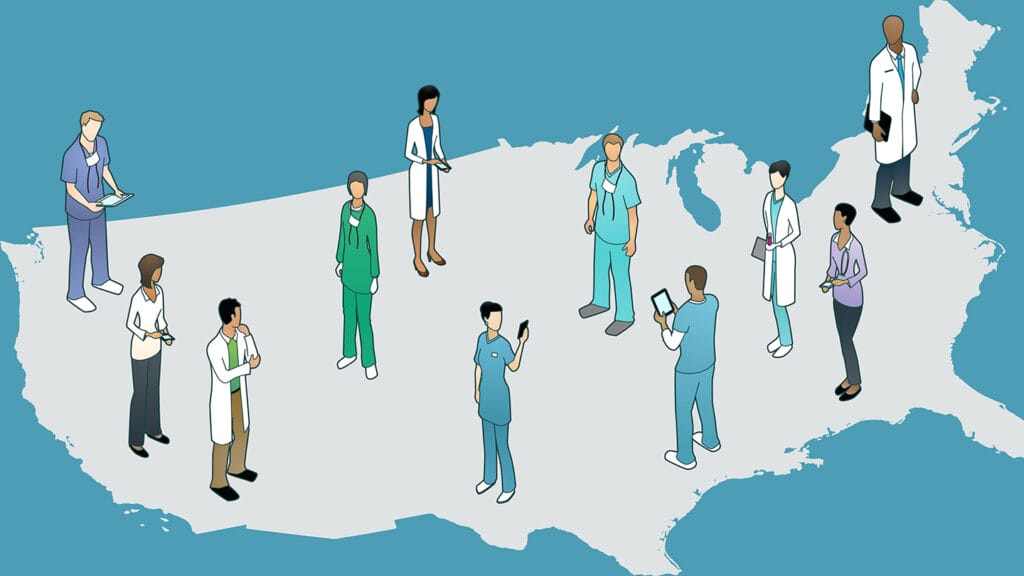

Assisted living operators that provide home- and community-based services to residents who are Medicaid beneficiaries could be affected as states continue to come into compliance with the provisions of the HCBS settings final rule, suggests the results of a KFF survey of state Medicaid HCBS programs.
One expert said that even providers that don’t provide HCBS would benefit from becoming familiar with its provisions.
The HCBS settings final rule in part is meant to protect beneficiaries’ autonomy in making choices and controlling decisions that affect their lives. Senior living industry advocates, however, had warned that the regulation could lead assisted living communities to stop accepting Medicaid as a payment source, causing some residents to need to move to nursing homes or other settings.
In 2023, 47 states provided HCBS through a combination of 1915(c) waivers — used by assisted living operators to provide such services — and 1115 waivers. Currently, 18% of assisted living residents rely on Medicaid to pay for daily services, and 61% of all assisted living communities are Medicaid-certified, according to the National Center for Assisted Living.
In their analysis, the KFF researchers included challenges for states and anticipated effects on those served, and they referenced a white paper released by LeadingAge that was issued this summer and recommended a two-year enforcement moratorium on the rule.
Alice Burns, associate director of the KFF Program on Medicaid and the Uninsured, told McKnight’s Senior Living that the assisted living communities that would be helped the most by the KFF report are those located in states that have not finished implementing the Medicaid HCBS settings final rule.
But even settings that aren’t affected by the final rule might want to become familiar with its provisions, as they could be a preview of what might be coming with an update to Section 504 of the Rehabilitation Act, which Burns calls a “what to watch” rule.
That update could have implications for assisted living providers, she said, because it addresses discrimination and would apply to any provider that takes federal money. So even providers that aren’t paid through a Medicaid waiver could be affected if they provide home health or personal care services.
The comment period on Section 504 is now closed, but Burns said that the Section 504 rule is so broad that it could affect most assisted living communities.
“It’s one of those things that if facilities are already in compliance with the HCBS settings rule, the 504 rule probably is not going to add a whole lot more challenges,” Burns said. “But for those who don’t take money from a waiver, or they’re in a state that is not yet in compliance, this rehabilitation rule could be a bigger deal.”
Profile of LTSS users
Another KFF report Burns said would be of interest to both assisted living communities and nursing homes looked at the age distribution of people using long-term services and supports. According to KFF, 6 million people receive Medicaid LTSS.
People aged fewer than 65 years tend not to live in assisted living and are served in their homes or in the greater community. But for adults aged more than 65 years — the assisted living target population — healthcare care plays a much bigger role in long-term care needs fulfillment, Burns said.
The researchers found that 56% of Medicaid LTSS users are aged fewer than 65 years and are using HCBS, whereas most older adults who use LTSS services are in institutional settings such as nursing homes. Most (62%) of Medicaid enrollees who use LTSS also are enrolled in the Medicare program or are dually eligible for both Medicare and Medicaid. The data, the authors concluded, suggest a consistent unmet need for services, contributing to the risk of unnecessary institutionalization for people with disabilities.
“It points to the fact that one of the barriers to moving more older people into HCBS is that it’s harder to have Medicaid coverage when you’re in assisted living,” Burns said. “You talk about demographics and this interesting age pattern emerges.”


